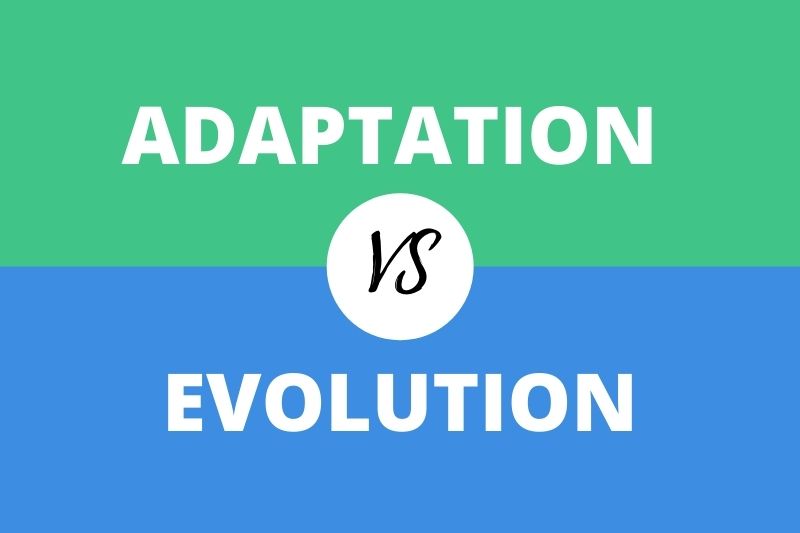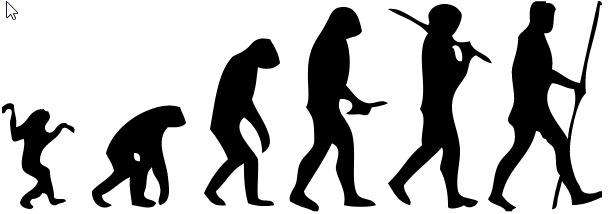Scientists have debated Adaptation vs Evolution for a long. Adaptation is the biological mechanism that helps organisms to adjust to new environments and to changes in their current environment.
Even though scientists discussed adaptation before the 17th century, it was not until then that Charles Darwin and Alfred Russel Wallace developed the theory of natural selection.
Wallace used to believe that the evolution of organisms was connected with an adaptation of organisms to the changing environmental conditions. In developing the theory of evolution by natural selection, Wallace and Darwin both went above and beyond simple adaptation by explaining the process of organisms adapting and evolving.
The basic idea of natural selection is that the traits that can be passed down allow organisms to adapt to the environment better than other organisms of the same species. This ultimately enables better survival and reproduction compared with other members of the species, leading to evolution.
Comparison Table: Adaptation vs Evolution
| Criteria | Adaptation | Evolution |
|---|---|---|
| Definition | It is a structure or form improved to fit a changing environment. | It is a change in the heritable characteristics of the biological population over a successive generation. |
| Results in | Adaptation results in phenotypic variation among species. | Evolution results in new species. |
| Change | A change in the phenotypic level. | A change in genotypic level. |
| Change in time | It is a short-term change. | It is a long-term change. |
| Reversible | Yes | Evolution is an irreversible change that occurs from generation to generation. |
| Condition of occurrence | Adaptation occurs under the effect of environmental conditions. | It occurs as a result of speciation. |

About Adaptation
It is the physical or behavioral trait of an organism that helps it to survive in the surrounding environment.
Adaptation means being able to endure all climatic conditions of the ecosystem which includes other species and predators. These predators and species often compete for the same food and shelter as the organisms.
Adaptation has several benefits like increased agricultural production and the high income of a household.
A great example of adaptation is how several plants have adapted to life in the deserts. This is an example of structural behavior because deserts are hot places. An example of behavioral adaptation is of animals who migrate. Adaptation helps species to survive and reproduce in an ecosystem. Which ultimately leads to evolution.
About Evolution

Evolution means the change of a character in a species from one generation to the other. This process counts on natural selection. The definition of this subject is based on the evolution theory that all species are connected but change with the course of time.
Evolution helps in a steady improvement in efficiency provided the environment is steady. When the environment is conducive, the most effective individuals have the most offspring.
Evolution is unforeseeable and takes many years to finally get there. In other words, it is slow. It also creates wasteful systems and processes. Without any doubt, evolution is a process that is powerful, which leads to rapid changes in the characteristics of an organism. Its limits, however, come from the absence of genetic variation, trait interaction, and difficulty in evolution.
The large-scale evolution is called macroevolution; stasis, character change, speciation, and extinction are the four patterns of it.
Stasis: Some species did not change over a long period of time and they are called live fossils.
Character change: The development of analogous and homologous structures.
Speciation: The emergence of new species due to the geographical or reproductive isolation of populations
Extinction: Many species have become extinct during evolution.
Do you know? Myeloblast vs Lymphoblast
Difference Between Adaptation and Evolution
1) Definition
Adaptation refers to a form or structure modified to fit a changing environment. Whereas, Evolution defines the change in the heritable characteristics of biological populations over successive generations.
These definitions provide the basic difference between adaptation and evolution. On this basis, there are many other differences between adaptation and evolution.
2) Occurrence
Adaptation occurs when a gene changes in form or nature by accident. Some of the reconstruction can help a plant or animal live better than others in an ecosystem with other species without such mutation. Evolution occurs when transmissible contrast becomes more common or rare in a population. The differences can be either through random genetic drift or non-random natural selection.
3) Importance
Adaptation helps in survival and moving on with life. Organisms and plants can survive different situations in the ecosystem due to adaptation. Evolution is essential in solving problems that affect lives. For example, researchers must know the evolutionary pattern of the disease-causing organism for them to stay ahead of pathogenic diseases that they may cause.
4) Degree of the Change
While adaptation is a change in the phenotypic level, evolution is a change in the genotypic level.
5) Factors affecting each
With the help of adaptation, many organisms have passed through slow stages and they have survived unfavorable conditions. Biotic environments like hunting efficiency are directed and reduce adaptation levels. Evolution is affected by the mutation, flow of genes, drift in genetics, and natural selection.
6) Long/Short Term?
Adaptation is a short-term change while evolution is a long-term change.
7) Causes
Whereas adaptation occurs under the effect of environmental conditions, evolution occurs due to speciation.
8) Reversibility
Although adaptation is a reversible change, evolution is an irreversible change, which occurs over generations.
9) Results in
Furthermore, adaptation results in phenotypic variation among species while evolution results in new species.
Do you know? Puerto Rican vs Mexican
Summary
Adaptations are physical or behavioral characteristics that make an organism survive in an environment. The transmissible variations occur as a result of random mutations which are quite rare.
Adaptation occurs due to mutation or natural selection. A mutation is a rapid genetic change that could be random or accidental.
Evolution also takes place when characteristics that are inheritable become regular or unusual in species. These heritable differences are either non-random through natural selection or random through genetic drift.
Environmental conditions cause rapid evolution because of their strong selective pressure. They affect a variety of essential ecological and life-history characters like species interaction and community structure. This prompts the species to evolve fast causing genetic and phenotypic shifts in generations.
Naomi is an educator with 2 decades of experience working with children of all ages. She is a keen observer of the magic and importance of Maths in our daily lives. Follow me on Linkedin
